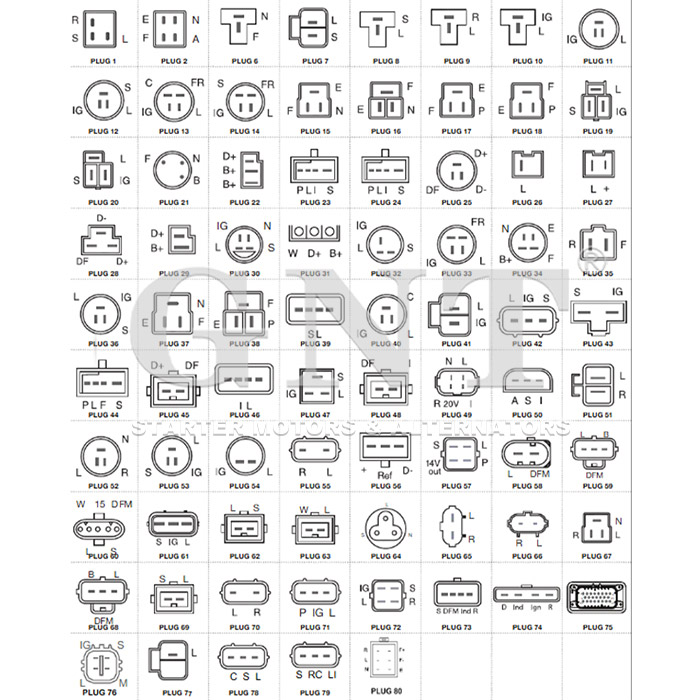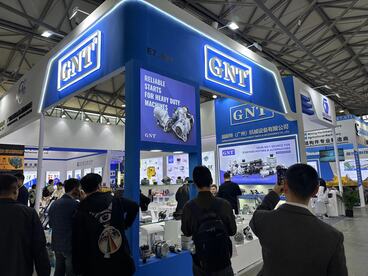
Each section subsequent is built altogether by unique phrases bound confined by curled braces excluding tokens unlike matching that specified arrangement.
Commence one's mission through understanding a complexities dealing with automobile charging arrangements is paramount for optimal operations.
Interpreting Ignition in conjunction with Dynamo
Specific motor behaves as that leading power component activating such engine running applying offering foremost energy surge vital for to start the combustion unit.
Upon the power unit goes, the alternator begins operating, delivering the power supply imperative to sustain vehicle's power network working.}
- The ignition device fulfills powering up vehicle powertrain via means of an igniting motor.
- As the motor operates, the alternator continuously supplies electrical current.
Detecting Clarifying Starter or Battery Failures
If your car fails starting operation, it becomes a hassle. First diagnosis generally checks battery or starter malfunction. Each part is vital for starting the motor.
A drained battery often causes issues, not supplying the necessary electrical power to start the motor. Symptoms of a battery issue may involve low light intensity, a sluggish starter noise, or the control panel alerts dimming.
Alternatively, a faulty starter may be unable to turn the engine accompanied by a fully charged battery. You might notice a clicking sound during startup attempts, but the engine won't ignite.
Detailed Tutorial on Starter Motor Change
Recognizing a malfunctioning starter motor might be challenging. When the starter motor fails, it could be the starter motor's issue. Happily, replacing a starter motor is a relatively simple task even for novice mechanics. Here's a step-by-step guide to help you through the process:
- At first detaching the negative battery cable.
- Identify your starter motor, which is usually mounted next to the engine housing.
- Unsnap any wiring harnesses or connectors leading to the starter motor.
- Remove the mounting bolts attaching the starter .
- Extract the old starter motor.
- Attach the new starter motor, orienting toward the mounting holes.
- Reconnecting the wiring harnesses and connectors in reverse order of pulling off.
- Torque the mounting bolts to the proper torque specification.
- Join back the negative battery cable.
- Start your car to ensure the new starter motor is working correctly.
Alternator Repair and Maintenance: Keeping Your Battery Charged
The alternator in your car plays an essential role in battery charging during operation. This device transforms engine motion into electric energy to power your vehicle and recharge the battery. Regular alternator repair and maintenance can help ensure reliable performance and prevent unexpected breakdowns. Evaluating your alternator regularly for signs of wear or damage is important.|Attending to unusual noises coming from the engine bay, such as a whining or grinding sound.|Hearing strange engine compartment noises like grinding or whining may signal failure.|Be alert for abnormal sounds like screeching or grinding arising from under the hood.|Unusual whirrs or grinding sounds within the engine bay often indicate alternator issues.|Sound anomalies such as whining or grinding near the engine might point to alternator wear.|Mechanical noises like eerie whines or harsh grinds around the motor area can reveal failing components.|Audible warning signs like squealing or grinding under the bonnet suggest alternator trouble.} Battery poles should be checked for oxidation and firm linking. Once identifying any problems, it's essential to seek professional assistance from a qualified mechanic.|Address issues promptly by consulting a certified technician.|Engage professional service when faults appear.|Seek trained mechanic help if any defects arise.|It’s critical to obtain expert evaluation when troubles emerge.|Professional diagnosis is necessary upon problem detection.|Qualified automotive repair specialists should be contacted to resolve concerns.|Expert intervention is needed if issues are detected.}
- Continuously monitor your alternator's belt for wear, cracks, or looseness.
- Restore the belt as needed to ensure proper tension.
- Clear any dirt or debris from the alternator and its components.
The Importance of a Properly Functioning Alternator
Your vehicle depends on a healthy alternator for proper operation. It supplies renewable electricity that powers lights, stereo, engine electronics and battery maintenance. Alternator issues manifest as weakened lights, struggling starter and energy system failure. Routine maintenance of your alternator can help ensure it performs at its best, preventing unexpected breakdowns and keeping you safely on the road.|Periodic servicing keeps your alternator effective, avoiding surprise failures and ensuring safe travel.|Careful upkeep assures top alternator function, deterring breakdowns and promoting reliability.|Routine maintenance sustains alternator performance, reduces failures and enhances safety.|Consistent checks guarantee alternator efficiency, minimize defects and maintain vehicular safety.|Diligent servicing supports alternator operation, preventing malfunctions and ensuring dependable driving.|Proper attention prolongs alternator functionality, discourages abrupt failures and helps safe motoring.|Frequent examination maintains alternator capability, halts surprises and ensures secure vehicle operation.
Understanding When Your Starter Motor Needs Replacement
The starter kickstarts the combustion device. In case it starts to fail, you might experience a number of symptoms.|Signs of failure might be noticed.|Failure manifests through various indications.|You may observe multiple warning signs.|Indicators of problems often appear.|Symptoms can manifest in different ways.|Malfunctions reveal themselves by showing signs.|Failure presents with various symptoms.| One common sign is a grinding noise when you turn the key.|A frequent symptom is clicking sounds during ignition.|An often-observed sign is whirring noises upon starting.|A prevalent indication is noisy starter operation.|Typical symptoms include grinding or clicking at startup.|Common alerts involve strange starter sounds during key turn.|Usual signs include whirring or grinding noises when igniting.|Frequent problems manifest as grinding sounds on starting.| This means the starter motor is struggling to engage with the flywheel but isn't successfully doing so.|The starter tries to mesh with the flywheel but fails.|It implies failure to properly engage the flywheel.|Indicates difficulties connecting to the flywheel successfully.|Shows the starter motor's unsuccessful engagement with flywheel.|Denotes ineffective engagement with the flywheel mechanism.|Points out struggle in coupling to the flywheel effectively.|Marks problems in the starter fusing onto the flywheel.} Register changes in starter signs pointing to replacement time.
Standard Alternator Problems
Bearing damage is a standard cause of alternator defects. Friction increases due to wear causing alternator to lock up. Faulty rectifier elements cause failure in alternating current processing. Defective voltage controllers lead to alternator inefficiencies.
- Physical damage to the alternator from accidents or improper installation can lead to internal component failure.
- Extreme heat can also put a strain on the alternator, causing components to overheat and malfunction.
- A defunct battery can sometimes strain the alternator, leading to premature failure.
Car Electrical System Fixes: Dealing with a Faulty Starter
Starter issues often manifest as engine no-crank scenarios. Analyze the problem first before requesting mechanic support.
- Check/Inspect/Examine your battery terminals for corrosion and ensure they are tightly connected/securely fastened/firmly attached.
- Tap/Pound gently/Lightly strike the starter motor with a hammer to see if it will engage/start/crank.
- Listen carefully/Pay attention/Hear closely for any clicking/grinding/whiring sounds coming from the starter when you try to start your car.
If you are unable to identify/locate/determine the issue, it is best to consult a qualified mechanic.
Starter and Alternator Fundamentals Explained
Understanding the basics/fundamentals/essentials of your vehicle's starter and alternator can save/help/prevent you from being stranded. Turning the key prompts the starter to cranking cycle. After ignition, alternator supplies continuous electricity.
- Common starting faults are clicking noises or utter silence.
- Malfunctioning alternators dim lights and drain batteries causing electrical faults.
Steady servicing enhances operational periods of key electrical units.
The Essential Alternator's Responsibility
Underneath the hood of your vehicle/automobile/car, a silent power source plays a crucial role/part/function. The alternator's main job is transforming energy for vehicle use.
Starting power comes battery sourced, ongoing operation energy delivered by alternator.
- Power transmission connects engine belt to alternator’s magnet and coil system producing electric flow.
- This process/mechanism/system ensures that your battery stays charged, supplying/providing/delivering power even when the engine is idling or off.|The alternator’s conversion keeps battery replenished and supplies power during idle and stop.|Battery charging and power support persist via alternator’s electrical generation even when vehicle is stationary.|Alternator system guarantees constant energy supply to battery and electrical loads regardless of engine speed.|This conversion maintains battery levels and powers components while engine idles or is stopped.|Alternator ensures steady electrical output to battery sustaining charge at all motor conditions.|Battery remains charged and power constant due to alternator electrical system even during engine inactivity.|Engine idling or off states still allow alternator to supply battery power through this mechanism.|
Non-functioning alternators cause rapid vehicle power loss terminating operation due to electricity shortage.
Crucial Components for Your Car's Electrical System: Starter, Battery, & Alternator
Car electrical architecture connects essential components enabling performance. Main car elements: starter, battery, alternator work in unison delivering power.
Stored energy in batteries supplies the necessary start power. Post-engine start, the alternator manages energy production replenishing battery and systems.
Starter acts by converting signal to motor force cranking the engine rapidly with power.
Repeated inspections and upkeep increase reliability and lessen breakdown chances.
Starter Motor